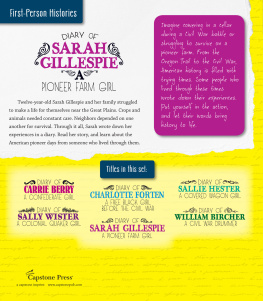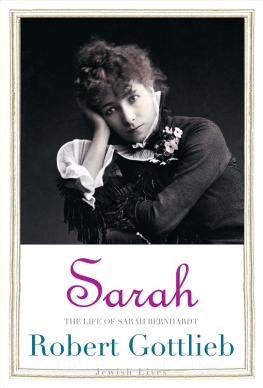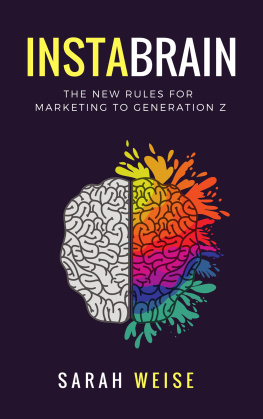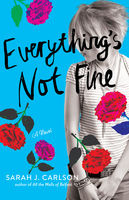Turner Sarah E. Nilsen Sarah - The Colorblind Screen
Here you can read online Turner Sarah E. Nilsen Sarah - The Colorblind Screen full text of the book (entire story) in english for free. Download pdf and epub, get meaning, cover and reviews about this ebook. year: 2014, publisher: New York University Press, genre: Politics. Description of the work, (preface) as well as reviews are available. Best literature library LitArk.com created for fans of good reading and offers a wide selection of genres:
Romance novel
Science fiction
Adventure
Detective
Science
History
Home and family
Prose
Art
Politics
Computer
Non-fiction
Religion
Business
Children
Humor
Choose a favorite category and find really read worthwhile books. Enjoy immersion in the world of imagination, feel the emotions of the characters or learn something new for yourself, make an fascinating discovery.

- Book:The Colorblind Screen
- Author:
- Publisher:New York University Press
- Genre:
- Year:2014
- Rating:4 / 5
- Favourites:Add to favourites
- Your mark:
- 80
- 1
- 2
- 3
- 4
- 5
The Colorblind Screen: summary, description and annotation
We offer to read an annotation, description, summary or preface (depends on what the author of the book "The Colorblind Screen" wrote himself). If you haven't found the necessary information about the book — write in the comments, we will try to find it.
The Colorblind Screen — read online for free the complete book (whole text) full work
Below is the text of the book, divided by pages. System saving the place of the last page read, allows you to conveniently read the book "The Colorblind Screen" online for free, without having to search again every time where you left off. Put a bookmark, and you can go to the page where you finished reading at any time.
Font size:
Interval:
Bookmark:
Thank you for buying this ebook, published by NYU Press.
Sign up for our e-newsletters to receive information about forthcoming books, special discounts, and more!
Sign Up!
A publisher of original scholarship since its founding in 1916, New York University Press Produces more than 100 new books each year, with a backlist of 3,000 titles in print. Working across the humanities and social sciences, NYU Press has award-winning lists in sociology, law, cultural and American studies, religion, American history, anthropology, politics, criminology, media and communication, literary studies, and psychology.
THE COLORBLIND SCREEN
Television in Post-Racial America
Edited by Sarah Nilsen and Sarah E. Turner

NEW YORK UNIVERSITY PRESS
New York and London
www.nyupress.org
2014 by New York University
All rights reserved
References to Internet websites (URLs) were accurate at the time of writing.
Neither the author nor New York University Press is responsible for URLs that
may have expired or changed since the manuscript was prepared.
Library of Congress Cataloging-in-Publication Data
The colorblind screen: television in post-racial America / edited by Sarah Nilsen and Sarah
E. Turner.
pages cm
Includes bibliographical references and index.
ISBN 978-1-4798-0976-9 (cloth: alk. paper) ISBN 978-1-4798-9153-5 (pbk.: alk. paper)
1. Minorities on television. 2. Race relations on television. 3. Racism on television.
4. Television broadcastingSocial aspectsUnited States. I. Nilsen, Sarah, editor of
compilation. II. Turner, Sarah E., editor of compilation.
PN1992.8.M54C86 2014
791.456552--dc23
2013043414
New York University Press books are printed on acid-free paper,
and their binding materials are chosen for strength and durability.
We strive to use environmentally responsible suppliers and materials
to the greatest extent possible in publishing our books.
Manufactured in the United States of America
10 9 8 7 6 5 4 3 2 1
Also available as an ebook
Sarah Nilsen and Sarah E. Turner
Ashley (Woody) Doane
Roopali Mukherjee
Eduardo Bonilla-Silva and Austin Ashe
Janice Peck
David J. Leonard and Bruce Lee Hazelwood
Evelyn Alsultany
Dina Ibrahim
Sarah Nilsen
C. Richard King
Sarah E. Turner
Shilpa Dav
Philip A. Kretsedemas
Jinny Huh
SARAH NILSEN AND SARAH E. TURNER
During his keynote address to the 2004 Democratic National Convention, then senator Barack Obama made the claim that there is not a liberal America and a conservative America. There is the United States of America. There is not a Black America and a White America and Latino America and Asian America: Theres the United States of America. These often-cited lines encapsulate the hope of a politician and a people who aspired to move the country past the color line to a time of unity through diversity. Obama himself acknowledges in the opening moments of his speech that his presence on this stage is pretty unlikely. And yet, America and the world grasped that moment and that image, carrying them to election night in 2008 and again in 2012. Ironically, however, in the countrys determination to both hold on to and project the image of a colorblind America, the reality of the countrys racialized differences and inequities was overlooked.
Obamas comment invites multiple interpretations. Is he a post-racial president, neither black nor white? Liberals see the speech as a symbol of progress, signifying that America really has escaped its racist past, while cultural theorists might read it as evidence of the problematic allegiance to the ideals of colorblindness. For example, cultural critic and philosopher Cornel West claims that by necessity, Obama has had to downplay his blackness to appease the white moderates and independents and speak to their anxieties (33). The interpretive moment marked by this speech highlights the complex cultural moment of twenty-first-century America. Despite, or perhaps indirectly as a result of, the election of a biracial president, race still plays a dominant role in this culture, and, as legal scholar Kimberl Crenshaw reminds us, racism is a central ideological underpinning of American society (1336).
A steady flow of academic studies continues to document the significant racial gaps in equity that permeate the core domains of social life and concrete social behaviors in America, such as housing and segregation, the labor market, close interpersonal relationships, politics, incarceration, and education (see Bobo and Charles). Much of this research has entered into the public discourse through mainstream media. As a survey of recent New York Times headlines reveals, even with the recent election of Barack Obama to a historic second term, race relations in this country are far from reconciled. The social contradictions manifested in the celebration of the reelection of the nations first biracial president and the persistent disregard for the socioeconomic inequities experienced by blacks and Hispanics illustrate the tensions that define what many refer to as post-racial America.
Racial attitudes in the United States have shifted significantly during the past four decades. In twenty-first-century America, the overt racism of the Jim Crow period has been replaced by significant social changes in public attitudes towards race. And yet racism persists amid deep divisions over appropriate social policy responses to racial inequality. Color-blind ideology must be understood as the outcome of a rhetorical strategy deployed in the wake of the modern civil rights movement in the early 1960s. In 1968, then presidential candidate Richard Nixon pioneered the use of race as a primary weapon of conservative electoral politics [by] relying on carefully selected symbols, rhetorical pronouncements, and code words that appealed to white voters nervous about racial change without alienating moderates who had opposed Jim Crow segregation and discrimination (Horton 192). Neoconservative politicians insisted that the passage of the Civil Rights Act of 1964 and the Voting Rights Act of 1965 had successfully eradicated any remaining structural barriers to the advancement of the African American community. Therefore, any remaining racial inequalities were the product of individual choice rather than social policy; subsequently, concerted efforts to eradicate these inequalities were seen as antithetical to the equal protection clause of the Fourteenth Amendment. Nathan Glazer, in his influential and foundational neoconservative book on racial issues Affirmative Discrimination: Ethnic Inequality and Public Policy (1975), laid the groundwork for this new conservative position on race that would persist to this day. He argued that the Civil Rights Act of 1964 could only be read as instituting into law Judge Harlans famous dissent in Plessy v. Ferguson: Our Constitution is color-blind (221). He concluded that it is now our task to work with the intellectual, judicial, and political institutions of the country to reestablish the simple and clear understanding that rights attach to the individual, not the group, and that public policy must be exercised without distinction of race, color, or national origin (221).
In the 1980s, under the administration of President Ronald Reagan, the neoconservative revisionist appropriation of the concept of color-blindness would blossom into a new and heavily promoted conservative discourse that combined an attack on race-conscious policies such as affirmative action with an implicitly racialized attack on social welfare programs for the poor (Horton 204). Colorblind ideology thus needs to be understood as an ideological rhetorical stance that serves to distort the goals of the civil rights movement by claiming that the movements objective was the eradication of racial considerations while also reassuring the dominant white culture that colorblindness represents a position of tolerance and acceptance for the equal treatment of all individuals regardless of the color of their skin. As Horton explains:
Next pageFont size:
Interval:
Bookmark:
Similar books «The Colorblind Screen»
Look at similar books to The Colorblind Screen. We have selected literature similar in name and meaning in the hope of providing readers with more options to find new, interesting, not yet read works.
Discussion, reviews of the book The Colorblind Screen and just readers' own opinions. Leave your comments, write what you think about the work, its meaning or the main characters. Specify what exactly you liked and what you didn't like, and why you think so.










